Healthy Diet Weight Loss
Healthy Diet Details
Technically healthy cooking is a regimen that includes all the nutrients you body needs to function well. Your daily intake of food should be comprised of approximately 55% carbohydrates, 20-35% daily fiber, 15% from lean animal or vegetable protein, seafood or poultry and no more than 30% of our daily calories should come from fat. Nutritionist say we should consume 1100 to 330 milligrams of sodium daily but most people eat more.
By following a healthy diet plan, not only will you feel better, you will also lose weight. this an easy way to achieve weight loss without feeling hungry all of the time.
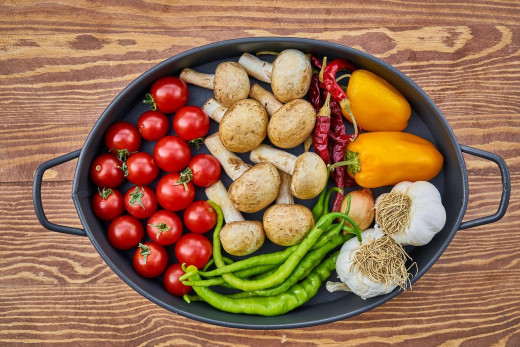
Methods of Cooking
Healthy cooking methods are important if you want to cut back on the fat and unnecessary calories. The four most common methods of cooking:
- Pan frying: Use nonstick or good quality cookware to reduce the amount of butter or oil. The healthiest oils are olive, peanut, safflower or canola. Fry quickly to seal in juices and you will get a flavorful well-browned surface. This works well for stir frying also. Low fat marinade is also useful.
- Roasting: Use only a thin coating of nonstick cooking spray on a roasting pan. Roast meat on a high heat and I have a rack in the bottom of my roaster for the extra fat and juice to drain to keep the calories lower in the meat.
- Braising: Gentle cooking in stock or other well-seasoned liquid with only a small amount of added fat will give you a succulent meat, poultry, fish or vegetables.
- Grilling or Broiling: Searing heat draws the fat away from the grilled or broiled foods while locking in the flavor and moisture. Marinade or basting liquids can enhance flavor.
Make Your Own Vegetable Stock
Making your own roasted vegetable stock is worth the effort as it yields fresher tasting than canned alternatives. Roasting the vegetables for a longer period of time will give you a darker, better flavored result.
- 7 large carrots, unpeeled, cut into chunks
- 3 yellow onions, unpeeled, quartered
- 8 celery stalks, cut into chunks
- ½ lb fresh mushrooms with stems intact, brushed clean and quartered
- 1 large baking potato, unpeeled, cut into chunks
- 2 cups water
- 4-6 fresh thyme or parsley sprigs, or a mixture
- ¼ tsp. whole peppercorns, crushed
- 1 bay leaf
Preheat oven to 350 degrees. Coat a large roasting pan with nonstick cooking spray.
Spread vegetables in pan and bake for 45 minutes to 1 hour, or up to 1 1/2 hours for a stronger flavor, stirring once or twice.
Remove from oven and transfer the vegetables to a large stockpot. Add the 2 cups of water to the roasting pan, then stir and scrape the bottom with a spatula to remove any browned bits. Add to the stockpot along with 4 ½ quarts of water, thyme and or parsley, peppercorns and bay leaf. Bring to a boil over high heat, skimming off any scum from surface. Reduce the heat to low and cover partially, simmering for 2 hours.
Strain the stock through a sieve or colander into a large bowl. Discard solids. Let the stock cool, then store in the refrigerator for up to 4 days or in the freezer for up to 3 months. This will make 4 quarts. Stock may be used as the primary cooking liquid for simmering poultry, meats, fish or vegetables, along with herbs, or spices. By making your own stock and using it this way you can control the amount of salt, and all the extra chemicals that are used in making stock be buy in cans at the grocery store,
Vegetable Stock from The Way to Eat
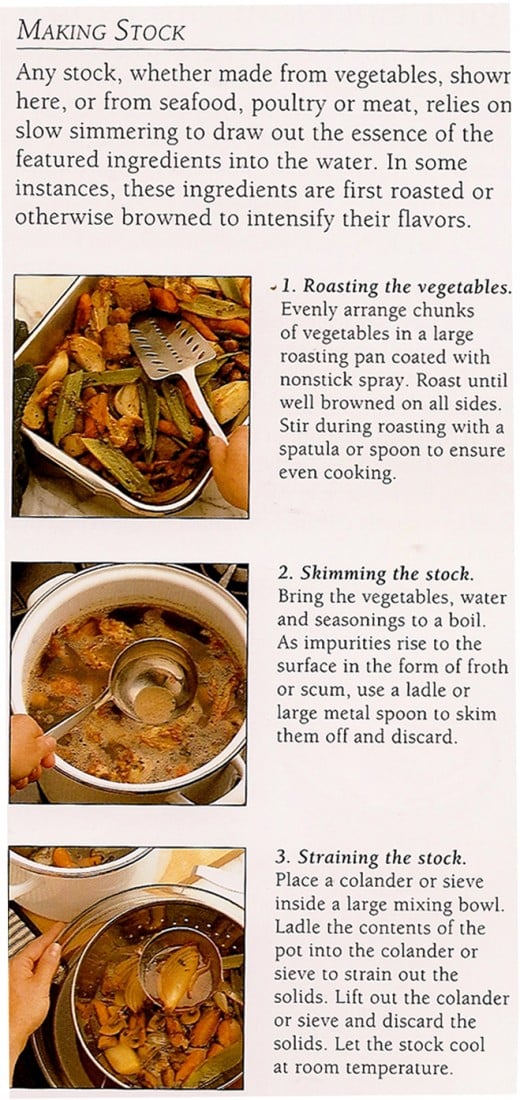
Well Stocked Pantry
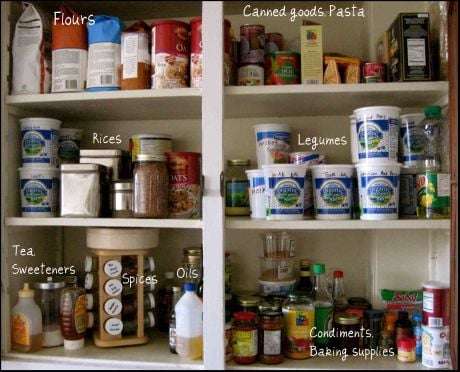
Well Stocked Pantry
Another very important aspect of healthy cooking is a well stocked pantry with healthy food for meals and snacks. The convenience factor of available healthy food has a large impact as to what types of meals we prepare.
If the food you have on hand presently is not healthy, than it is time to clean out the pantry, refrigerator, cupboards and freezer to begin your new dietary patterns. A well stocked pantry can be your ultimate fast food location right in your home.
A well stock pantry has all your dried grains and beans. Choose the healthiest products, such as; wheat berries, barley, lentils, soy beans, brown rice, small white beans, veggie burger mix, whole grain breads, whole grain wraps or pita, to name just a few. Breakfast items should include your fortified healthy cereals, steel cut oats, oatmeal, pancake mix, 100% maple syrup and honey.
Seeds and snacks that are healthy include sunflower, pumpkin seeds, flax seeds, pine nuts, walnuts, hazelnuts, almonds and soy nuts.
Oils and vinegars are usually in the pantry also. The healthiest choices are canola, olive and flax seed oil. The vinegars include balsamic, red wine, and apple cider.
As for your canned products, a larger variety of beans will come in handy with chick peas, cannellini, black and red kidney beans being the best choice. Keep crushed, whole plum and diced tomatoes, tomato paste, corn kennels, tuna in water, salmon in water, fat-free refried beans, pumpkin and evaporated skim milk.
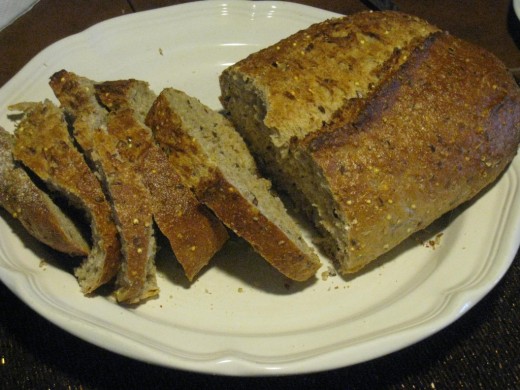
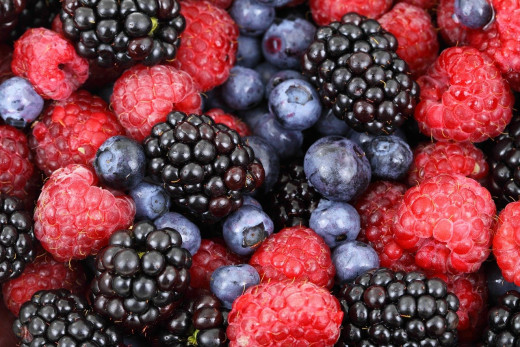
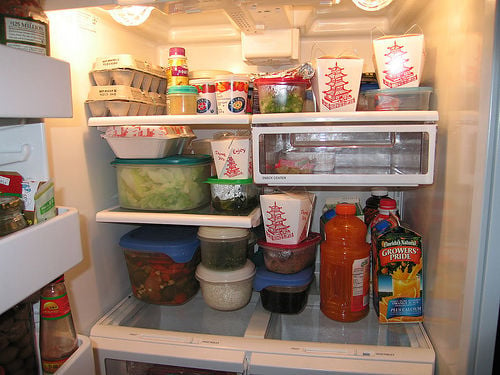
Refrigerator and Freezer Items
In your refrigerator the suggested list is a bit longer. Keep skim, soy or rice milk, fat-free buttermilk, orange or other 100% natural juices, flaxseed oil, omega-3 eggs, low fat yogurt, low-fat string cheese, fat-free pudding, nonfat ricotta, tofu, Mozzarella cheese, part-skim, Dijon mustard, fat-free salsa, hummus, avocado, unsalted peanut butter, a healthy margarine, all-fruit preserves. Then, in your produce drawer keep lemons/limes, tomatoes, scallions, bagged baby carrots, bagged spinach, lettuce of mixed greens, other produce (like broccoli, zucchini, squash, etc), sun dried tomatoes, fresh herbs (one bunch at a time as the they have a short shelf life), roasted red peppers in vinegar, horseradish, olives, capers fat-free polenta and whole grain sliced bread.
Moving on to the freezer, keep frozen berries, i.e. strawberries, blueberries, etc., lean ground turkey, filet of sole, peas, boneless, skinless chicken breast, shrimp, salmon steaks or fillets, veggie burgers, fat-free yogurt, sorbet, and you can keep fruit juice concentrates.
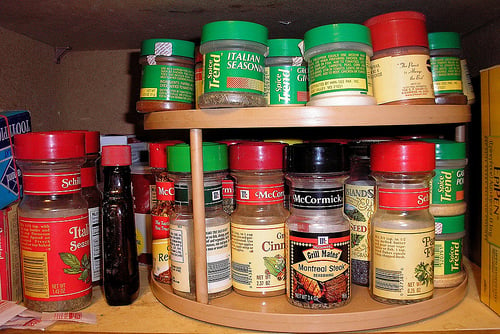
Seasonings
Seasonings are most important as we can add all kinds of wonderful flavors to otherwise bland food. The list is long but I imagine you already have many of these in your home. The suggested healthy seasonings include; garlic powder, nutmeg, oregano, paprika, red pepper flakes, salt (or lite salt), thyme leaves, ground turmeric, rosemary, basil, cinnamon, coriander, cumin, curry, cilantro, fennel seeds, bread crumbs (unsalted), cooking wines (vermouth, sherry, red), dried mushrooms, fat-free low-sodium vegetable and chicken broth, low-sodium soy sauce, and fresh black peppercorns and pepper mill.
Make Some Money and Join Hubpages Today
In Conclusion
There are some root vegetables to keep on hand as well; potatoes (baking, red, Yukon gold, sweet or yam), fresh garlic cloves, onions (yellow and red), shallots, fresh ginger root.
Last, but not least for many people are the healthy snacks. Fresh fruit tops the list and is always preferable over caned. Keep a variety of dried fruit also, such as raisins, dates, figs, and apricots. Keep fat-free whole grain crackers, pretzels, corn chips, salsa, microwave popcorn, trail mix and some homemade or healthy granola bars.
Obviously you and your family may not like all the things listed here, but this long list is to give you an idea of the healthy choices that are preferable. If you empty your pantry and refrigerator of the fattening unhealthy food, these are numerous healthy items you can purchase to restock. Then, it’s up to you to grab a quick healthy snack versus that candy bar, or come home and put fish in the oven instead of driving through the fast food restaurant. It is much easier to adhere to a healthy cooking diet with the proper nutrients when you have a nice variety of healthy food at your fingertips.
© 2010 Pamela Oglesby








